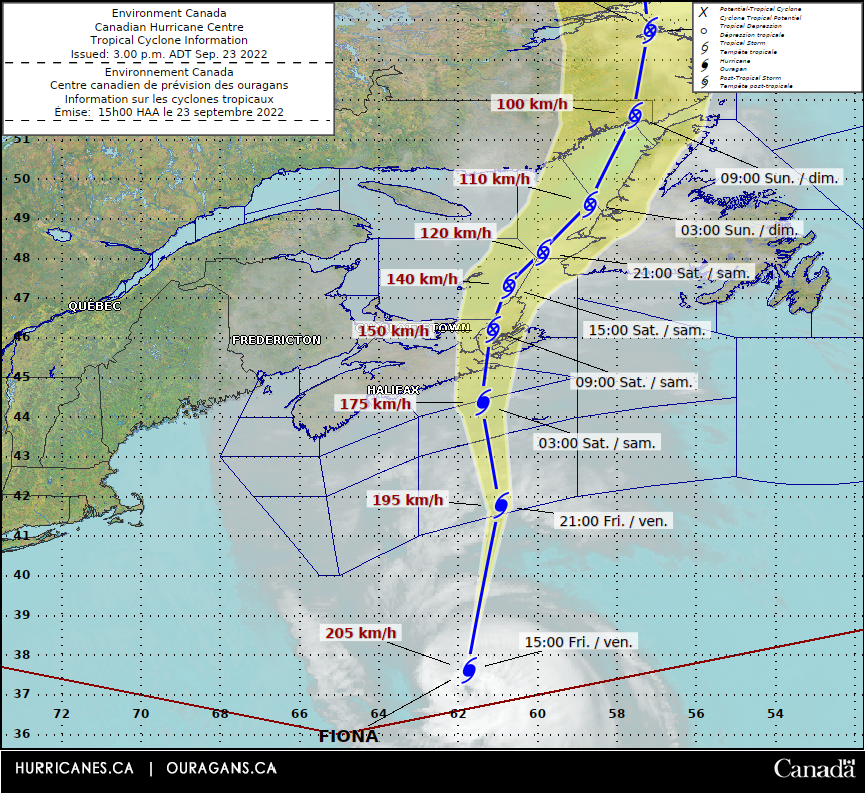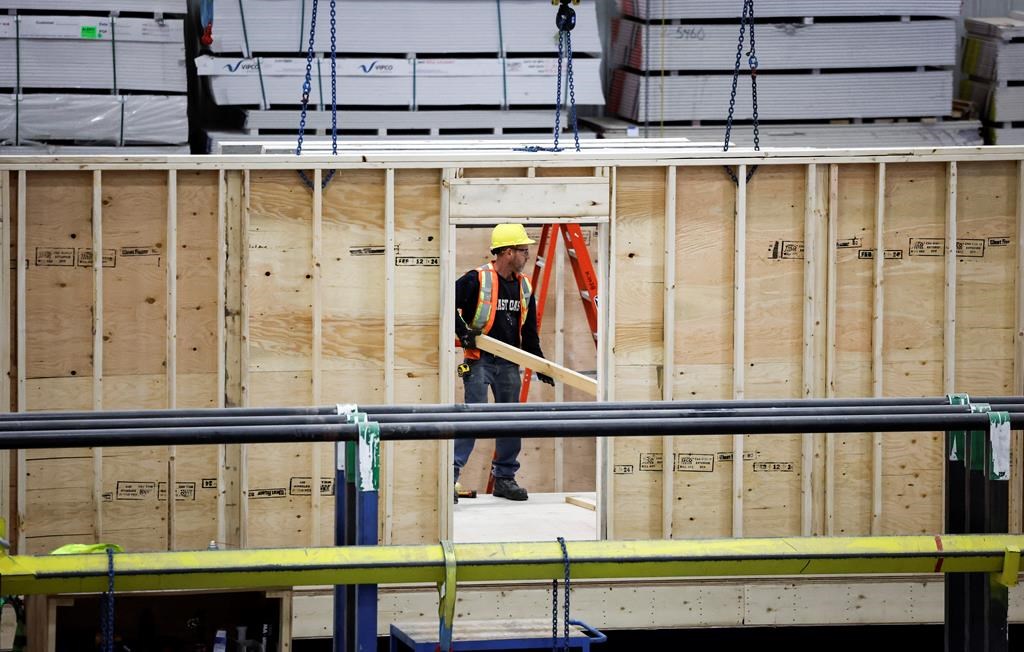Hurricane Fiona to begin impacting Atlantic Canada on Friday with ‘severe’ wind, rain
Posted September 22, 2022 10:48 am.
Last Updated September 23, 2022 10:18 pm.
Residents on Canada’s east coast are bracing for what could be the country’s strongest ever storm as Hurricane Fiona continues to churn north in the Atlantic.
The Canadian Hurricane Centre says post-tropical Storm Fiona has begun impacting Atlantic Canada and eastern Quebec with heavy rainfall and powerful hurricane-force winds and will continue overnight and into Saturday.
#Fiona is now declared post-tropical and will be making landfall over eastern Nova Scotia in the next few hours. Winds are ramping up with the highest winds gusts reported so far from Beaver Island at 152 km/h.
12AM ADT Intermediate Advisory: https://t.co/z6u9thPyiP pic.twitter.com/rucKXAgO8R
— ECCC Canadian Hurricane Centre (@ECCC_CHC) September 24, 2022
Fiona is on track to make landfall in the next few hours, Environment Canada says. Wide-spread gusts of 80-110 km/h have been so far reported over Nova Scotia, Prince Edward Island and Iles-de-la-Madeleine.
All areas in the Atlantic provinces that were previously under tropical storm or hurricane watches are now under warnings, including Nova Scotia, Prince Edward Island, Newfoundland, most of New Brunswick, and the far eastern parts of Quebec.
“This storm has the potential to be a landmark event for Atlantic Canada,” says Jim Prime, meteorologist for Environment Canada. “We have very strong winds that are coming. A lot of rainfall, some areas may see months of rainfall within 12 to 24 hours.”
Prime says the winds will produce high waves, which will potentially lead to coastal flooding in several areas.

After reaching Nova Scotia waters by Friday night, the storm is expected to pass through Cape Breton and Prince Edward Island on Saturday and on to Quebec’s Lower North Shore and southeastern Labrador early Sunday.
“This is definitely going to be one of, if not the most powerful, tropical cyclones to affect our part of the country,” said Ian Hubbard, meteorologist for the Canadian Hurricane Centre in Dartmouth, Nova Scotia.
“It’s going to be definitely as severe and as bad as any I’ve seen.”
Prime says the highest impact for Nova Scotia, New Brunswick, and Prince Edward Island will be from Friday night through to Saturday afternoon.
Hurricanes in Canada are somewhat rare, in part because once the storms reach colder waters, they lose their main source of energy. and become extratropical.
But those cyclones still can have hurricane-strength winds, though with a cold instead of a warm core and no visible eye. Their shape can be different, too. They lose their symmetric form and can more resemble a comma.
Environment Canada warns the impacted areas can expect wind gusts of up to 60 to 90 km/h. As much as 200 millimetres of rain is forecasted to fall in some regions.
“Wind gusts closer to 100 km/h are expected in some regions,” the weather agency warned.
“These winds could break large tree branches resulting in downed utility lines. Some damage to signage and roof shingles may also occur. Secure loose objects on your property and anticipate power interruptions. Identify important belongings and backup items such as flashlights in case of power interruption.”
Latest from @NHC_Atlantic shifts #Fiona slightly east with a landfall now possible again in Cape Breton Saturday morning. At this point this doesn’t have a major impact on the forecast but I’ll be watching the trend through the evening. @SaltWireNetwork #NSwx #NBwx #PEwx #NLwx pic.twitter.com/JctRFri8TL
— Allister Aalders (@allistercanada) September 23, 2022
The U.S. hurricane center said the storm had maximum sustained winds of 205 km/h late Thursday. It was centred about 200 km north of Bermuda, heading north-northeast at 41 km/h. Fiona is expected to be a post-tropical storm by the time it reaches Canada.
Meteorologists warn that whether or not the storm is classified as a hurricane when it arrives, it will still present a danger for residents in the impacted areas.
Residents advised to make preparations, have emergency kits ready
Along with the wind and rain, the storm is also expected to bring high waves that could lead to coastal flooding, as well as widespread power outages and structural damage to some buildings. Any buildings under construction will be particularly susceptible.
Residents are being urged to make any household preparations now, ensuring they have emergency kits ready, their storm drains are cleared, and outdoor furniture is removed.
Environment Canada recommends each household has sufficient food and water for up to 72 hours, and residents should ensure they have a way to charge cell phones if they do not have a landline.
“There’s still time to prepare,” says Prime. “Make sure you’re prepared. There is a high likelihood we will see widespread power outages that will last for several days.”
“Make sure you can hunker down through the storm until it is over, and then we can start the cleanup afterwards.”
People are being advised to avoid travelling to Atlantic Canada. Air Canada has announced they will be waiving change fees for numerous destinations due to the expected stormy weather — among them, Halifax, Fredericton and St John’s.
With files from the Associated Press








